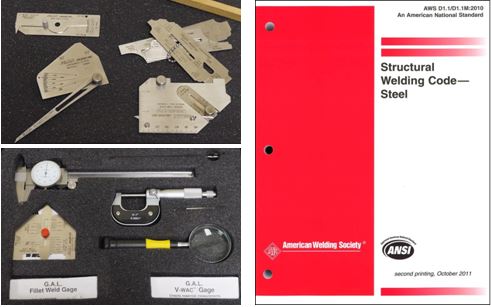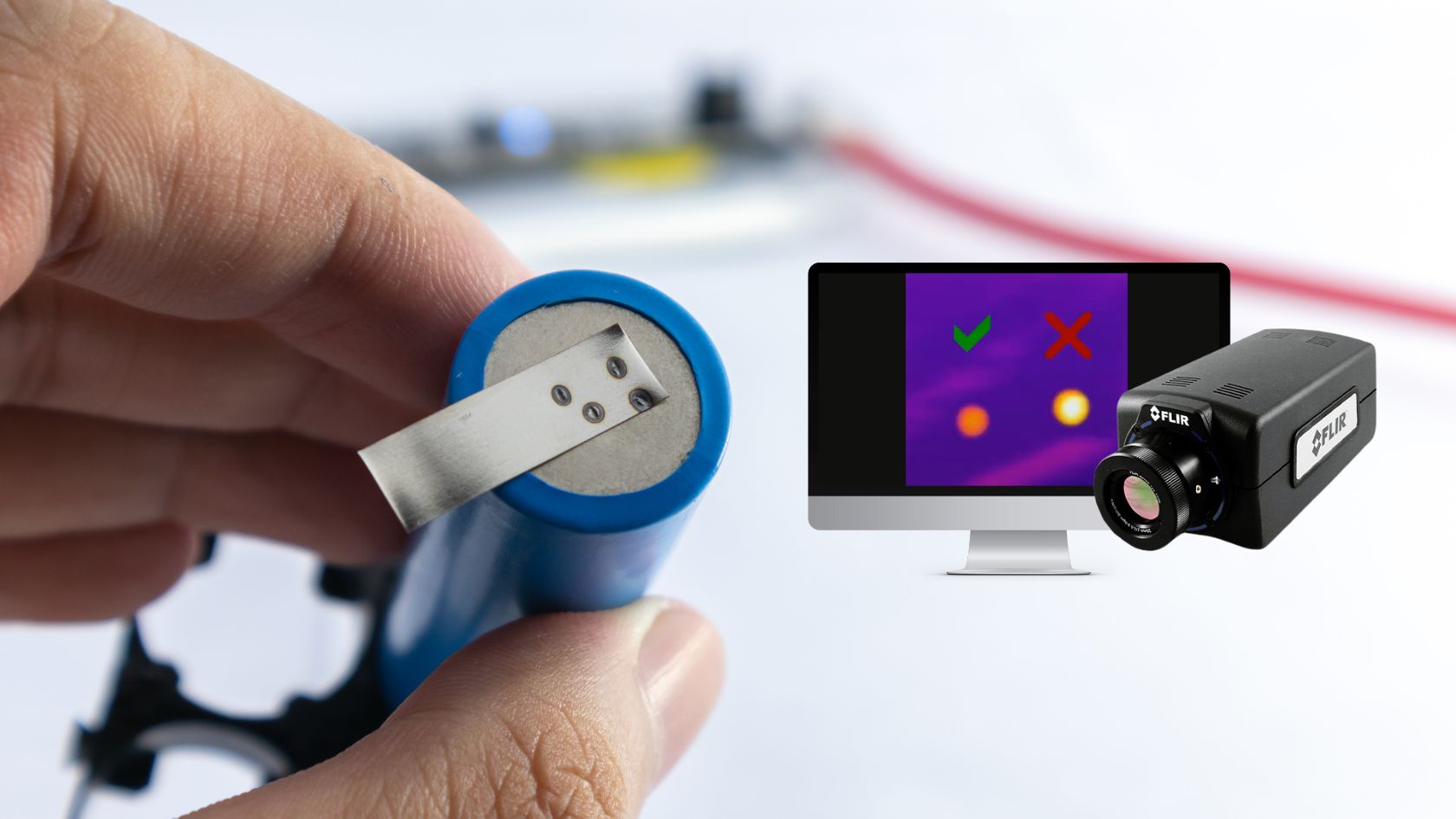A Comprehensive Guide to Welding Inspection Madison Requirements
A Comprehensive Guide to Welding Inspection Madison Requirements
Blog Article
How Reliable Welding Evaluation Improves Architectural Honesty and Long Life
In the world of building and construction and engineering, the value of welding examination can not be overstated, as it plays an essential duty in ensuring architectural honesty and expanding the life-span of projects. By deploying a variety of sophisticated assessment strategies, such as radiographic and ultrasonic screening, specialists can identify defects that might jeopardize the dependability of a structure. The inquiry stays: exactly how do these careful processes convert right into tangible advantages for sturdiness and safety and security? Join the expedition of just how effective welding inspections can change possible vulnerabilities into staminas, adding to the enduring success of constructions.
Importance of Welding Assessment
Guaranteeing the architectural integrity and safety of bonded building and constructions mandates strenuous welding examination processes. Welding assessment functions as a critical guard in the building and production markets, where the strength and durability of joints substantially impact the overall efficiency of frameworks. This assessment makes certain that welds satisfy particular criteria and specs, minimizing the risks associated with structural failures. The effects of inadequate welds can be tragic, bring about expensive repair services, functional downtimes, or even catastrophic failings, all of which highlight the paramount relevance of thorough examination.
Along with safety and security, welding examination plays a crucial role in quality control. By sticking to fixed criteria, evaluations ascertain the consistency of welds, making sure that each fulfills the wanted stamina and aesthetic requirements. This uniformity is important not only for safety and security but additionally for maintaining the reputation and integrity of makers and constructors. Moreover, governing conformity is a significant driver of welding inspection techniques. Industry standards and codes, such as those from the American Welding Culture (AWS) or the International Company for Standardization (ISO), necessitate adherence to stringent standards, highlighting the relevance of inspections in fulfilling these specialist and legal commitments.
Key Inspection Techniques

Ultrasonic Examining (UT) utilizes high-frequency acoustic waves to discover subsurface defects, using exact information concerning weld honesty without causing any damage. Radiographic Examining (RT), involving X-rays or gamma rays, provides an in-depth photo of the weld's interior structure, exposing concealed blemishes. Magnetic Bit Checking (MPT) is an additional non-destructive technique, specifically effective for discovering surface area and near-surface interruptions in ferromagnetic materials.
Penetrant Testing (PT) entails the application of a fluid color to expose surface-breaking defects, supplying a affordable and simple option for non-porous materials. Each strategy has its particular applications, staminas, and limitations, and commonly a combination of methods is employed to accomplish extensive examination outcomes. Mastery of these methods boosts the dependability and resilience of welded frameworks, lining up with safety and performance assumptions.
Identifying Common Issues

Porosity, characterized by gas pockets within the weld, lowers the weld's stamina and sturdiness. It typically results from impurities or improper shielding gas. Splits, which can happen throughout or after welding, pose significant dangers as a result of their prospective to propagate under anxiety. They commonly emerge from extreme tension, quick cooling, or improper weld design.
Insufficient blend, where the weld metal stops working to bond completely with the base product, threatens the structural stability, leading to weak joints. Slag additions occur when non-metallic products are trapped in the weld, jeopardizing its stamina and high quality.
Identifying these flaws via meticulous evaluation methods, such as aesthetic exam, ultrasonic screening, or radiography, is crucial. Resolving these worries makes certain weld top quality, inevitably sustaining the structural integrity and safety and security of the developed setting.

Enhancing Architectural Efficiency
Recognizing the significance of recognizing typical weld defects naturally results advice in discovering approaches for boosting structural efficiency. The fundamental method for improving performance requires employing advanced welding methods and materials that reduce problem incident. Using top notch filler products and ensuring proper warmth control can significantly decrease problems such as porosity and breaking, thus boosting the weld's stability.
Incorporating cutting edge welding modern technologies, such as laser welding and friction mix welding, further enhances structural durability. These strategies supply exceptional accuracy and minimized thermal distortion, directly influencing the durability and strength of the welded frameworks. Moreover, adopting automated welding systems can make sure regular and repeatable weld high quality, lessening human mistake.
Additionally, implementing extensive pre-weld and post-weld treatments is critical. Correct joint design, surface preparation, and stress-relieving processes add to ideal weld efficiency. Conducting detailed pre-weld assessments enables very early discovery of potential problems, assisting in timely adjustments before they jeopardize the structure.
Long-lasting Advantages of Inspection

Via attentive assessment techniques, the long-term benefits to architectural stability ended up being significantly evident. Constant and extensive welding examinations play a critical duty in preventing architectural failures by recognizing issues and disparities early in the building process. This proactive technique makes sure that possible concerns are addressed prior to they can compromise the safety and security and resilience of frameworks. By catching problems early, costly repairs and downtime are decreased, inevitably expanding the life-span of the facilities.
In addition, regular inspections add to preserving compliance with sector standards and guidelines, consequently avoiding legal and financial consequences. This adherence to quality control not just improves the reliability of the framework yet additionally promotes count on amongst stakeholders, consisting of clients, engineers, and regulatory bodies. The extensive documents of examination results acts as an important source for future repair and maintenance efforts, helping with educated decision-making.
Additionally, reliable examination practices sustain advancement by integrating sophisticated innovations such as non-destructive screening and digital imaging, which can improve accuracy and performance. This technical combination further emphasizes the commitment to quality in architectural integrity. Eventually, investing in meticulous welding inspections is a sensible strategy that produces substantial long-lasting advantages, safeguarding both the economic and physical financial investment in framework tasks.
Verdict
Reliable welding examination plays a critical function in boosting structural stability and durability by recognizing flaws early in the building and construction process. Using techniques such as visual examination, ultrasonic screening, and radiographic testing ensures the discovery of issues like splits and porosity that endanger weld toughness. Rigorous inspections make certain conformity with market criteria, thus lengthening the lifespan of frameworks, Continued lessening costly fixings, review and cultivating stakeholder trust fund in the reliability and security of welded buildings.
In the world of building and construction and engineering, the relevance of welding evaluation can not be overemphasized, as it plays an essential function in making sure structural stability and prolonging the lifespan of jobs.Guaranteeing the structural integrity and safety and security of welded buildings mandates rigorous welding evaluation processes.Structure upon the relevance of welding assessment in protecting architectural honesty, understanding the crucial inspection strategies comes to be essential for efficient execution. Effective welding assessment incorporates a range of approaches designed to review weld top quality, making certain conformity with rigid design standards - Welding Inspection Madison.Effective welding evaluation plays a crucial duty in improving architectural stability and durability by identifying issues early in the building and construction process
Report this page